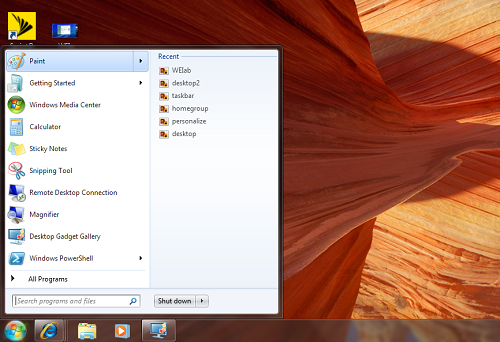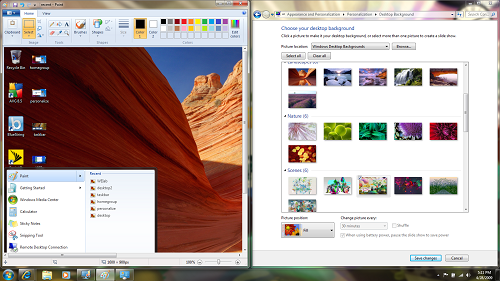The most surprising thing about today’s Windows 7 pricing announcement isn’t the pricing, but how Microsoft directly delivered news about it. While Microsoft issued a press release, the most substantive information comes from the Windows Blog, which the release links to. For anyone still clinging to the fantasy that there is some magical separation between Microsoft public relations teams and its bloggers, wake up! There really is none.
Perhaps there shouldn’t be, and that should concern Microsoft’s outside public relations agencies and what their future role will be. People naturally are more interested in other people and what they have to say. Surely a blogger, an identifiable human being, with posted picture and personality, is more believable and memorable than a germane press release.
It’s sensible that Microsoft employees working on products or with product groups should be part of the messaging and marketing early on in the process. I’ve criticized Microsoft for using some blogs for the stealth PR; I still bristle about it. But I also must realistically acknowledge stunning changes in just the last 12 months, with regards to information dissemination and the disruptive role new, or fairly new, social networking services play.
Social media is transforming how news is gathered and conveyed. People want to read stuff from real people. Yesterday, Lous Gray asked, “Are authors or publications impacting how you consume news?” It’s the right question to ask and, yes, the times they are changing—and rapidly. Even the blogosphere is rapidly becoming old fashion—out of vogue, if you prefer.
Yesterday, Charles Arthur asserted that “the long tail of blogging is dying.” He writes:
Where is everybody? Anecdotally and experimentally, they’ve all gone to Facebook, and especially Twitter. At least with Twitter, one can search for comments via backtweets.com—though it’s still quite rare for people to make a comment on a piece in a tweet; more usually it’s a ‘retweet,’ echoing the headline. The New York Times also noticed this trend, with a piece on 9 June about “Blogs Falling In An Empty Forest“, which pointed to Technorati’s 2008 survey of the state of the blogosphere, which found that only 7.4m out of the 133m blogs it tracks had been updated in the past 120 days. As the New York Times put it, ‘that translates to 95% of blogs being essentially abandoned.’
Confession: Where did I find the blogs about blogs by Charles and Louis? Twitter, of course. Charles is right, people are flocking to Facebook, which is starting to become a gravity well pulling people from other online services. Facebook is the new Windows, an operating system in the clouds. In a July 2007 post, at Microsoft Watch, I called Facebook “an operating system-like platform in the clouds.”
I’m on record as calling Windows 7 the last major release of the operating system. Even if there is a Windows 8, with similar heritage, Facebook and the gravity well of other cloud services will pull more and more people away. The desktop operating system is becoming irrelevant.
Windows 7: The Price Is Right?
The question of desktop operating system relevance brings me to the broader topic: Windows 7 pricing and the short-term promotion running from tomorrow through July 11. Apple has lowered the perceived cost for an operating system by shockingly aggressive Mac OS X 10.6 (Snow Leopard) pricing. Apple plans to release the software in September for $29 or $49 as a five-user Family Pack. Only Leopard users qualify for the discounted pricing.

Apple’s brand is strong and so is the perceived value of its operating system. Snow Leopard will still be valuable, just for lots less money. It’s a smart value play by Apple, which lowered bar beyond what Microsoft could meet with Window 7 pricing:
- Home Premium: $119.99 upgrade; $199.99 full version
- Professional: $199.99 upgrade; $299.99 full version
- Ultimate: $219.99 upgrade; $319.99 full version
Many blogs and news sites are reporting big savings over Windows Vista, which is a twisted nuance. From Brandon LeBlanc’s Windows Blog post:
For Windows 7, we are reducing the price on our most popular retail product for customers, the Home Premium Upgrade, by approximately 10% (depending on the market)…This means that Windows 7 Home Premium full retail product is $40.00 less than Windows Vista Home Premium today.
I don’t see real savings, for a two primary reasons:
- Windows Vista Home Premium added a new pricing SKU, effectively raising the operating system’s price compared to XP.
- In most markets, Windows 7 Home Basic will not be available, eliminating the lower cost—and much inferior—alternative to Home Premium.
Forgive my not cooing over Microsoft’s lowering pricing claims. By exact comparison, Microsoft can make them. For all practical purposes, there is no big bargain for Home Premium buyers.
Fifty Bucks Is a Marketing Bargain
That said, Microsoft has got a deal, which would be a steal if not for Apple pricing Snow Leopard so damn low. From tomorrow through July 11, Microsoft and its retail partners will offer Windows 7 Home Premium and Professional version upgrades steeply discounted—that’s $49.99 and $99.99, respectively.
I’ve been trying to make sense of the promotion, and its timing. I could see Microsoft offering a pre-order deal from, say, June 15-30, which would give nice Windows retail sales uplift to its fiscal year, which ends next week. That’s assuming Microsoft could recognize the revenue, which it probably can’t when taking money for undelivered goods.
So, I’ll rationalize the pre-order offer the way I would, from a marketing perspective—which, unfortunately, probably isn’t how Microsoft will do it. Right now, based on public Microsoft statements and leaks, Microsoft is targeting July 13 as Windows 7 release to manufacturing. That’s two days after the pre-order sale ends. (Note: The June 26-July 11 pre-order sale is for United States. Dates vary in other countries.)

A smart Microsoft would let loyal customers who preordered get early access to Windows 7 long before the official October 22nd launch date. I would let them download Windows 7 starting July 14, with activation code, and send physical media later on. It’s bad business, not a way to generate good feeling about Microsoft or the Windows brand, to make loyal pre-order customers to wait three months to get the software.
Providing early access fits in with Microsoft using a blog to dish out the Windows 7 pricing details and with ongoing online social trends. Sure, MSDN and TechNet subscribers and bunchs of official bloggers and reviewers will get the code as soon as it RTMs and offer reaction in blogs and news stories. But the real, early marketing benefit could come from people who paid for Windows 7 and wrote reviews on sites like Amazon or offered reaction on Facebook and Twitter.
These people can generate genuine Windows 7 buzz. The best Windows 7 marketer will be that early adopter who has the software before any of his or her friends, family, colleagues or neighbors. By the way, the buzz would preempt Snow Leopard’s September launch.
Microsoft also would get one more Windows 7 shakedown before official release. The kind of people shopping for Windows 7 bargains won’t necessarily be the same folks that downloaded the release candidate. While there is overlap, these are still two fairly distinct groups of early adopters. Last-minute problems with applications or software drivers would likely come out.
I’ll close with two questions: Is fifty bucks low enough price for you to buy Windows 7 Home Premium? Are you disappointed there is no low-cost, pre-order option for Windows 7 Ultimate?
